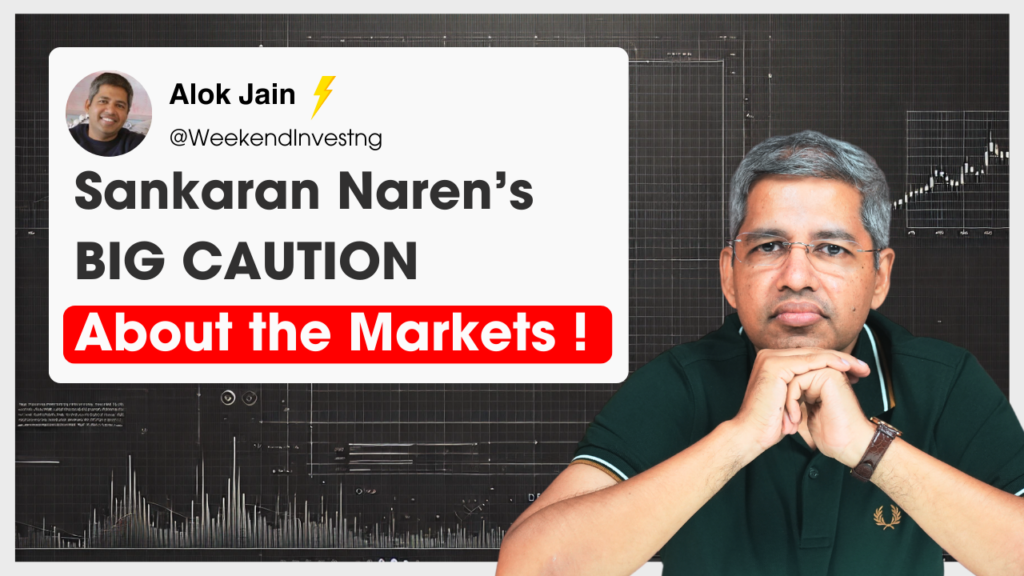
Markets are in bad shape today for a variety of reasons. One major factor could be that the US is pushing for more tariffs. Trump seems determined to engage in a tariff war with almost everyone. Our Prime Minister is likely to meet him in the next few days, and hopefully, they will negotiate something that isn’t too detrimental to Indian interests. This is one of the concerns hanging over the market right now.
On the positive side, the budget has brought some good news, along with the change in government in Delhi, which may create fewer obstacles for economic reforms. However, despite this feel-good atmosphere, the market has not reflected it positively. To make matters worse, one of the most senior fund managers has recently come out to caution about the markets. We’ll delve deeper into this.
Where is the market headed?
Market Overview
After the recent thousand-point rally, the market is beginning to give up some of those gains. It’s already down about 400 points from where it had reached in just four sessions. This isn’t good news. There was a small gap, which also got filled today. While the panic from earlier isn’t quite as intense now, there is always the possibility of another wave of it.
Typically, what happens is that you’ll see one strong down move followed by a bounce, then another strong down move and another bounce. By the third or fourth such movement, the bears tend to get exhausted, and that’s when a few months of rally typically follows, often as a contra-rally or a reversion to the mean. The 200 DMA (200-day moving average) is currently around 24,000, and once the market crosses that level, confidence could return. At the moment, however, we’re still making lower lows and lower highs. So, for all practical purposes, the market isn’t out of the woods yet.
Today, we saw the Nifty drop by around 3/4 of a percent.
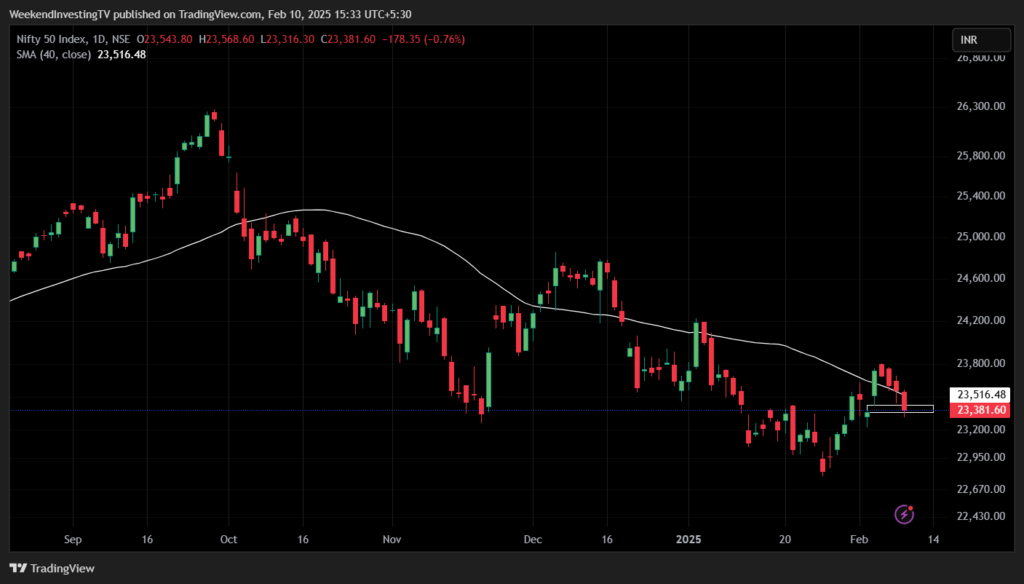
Nifty Next 50
Nifty Junior dropped by 1.8%
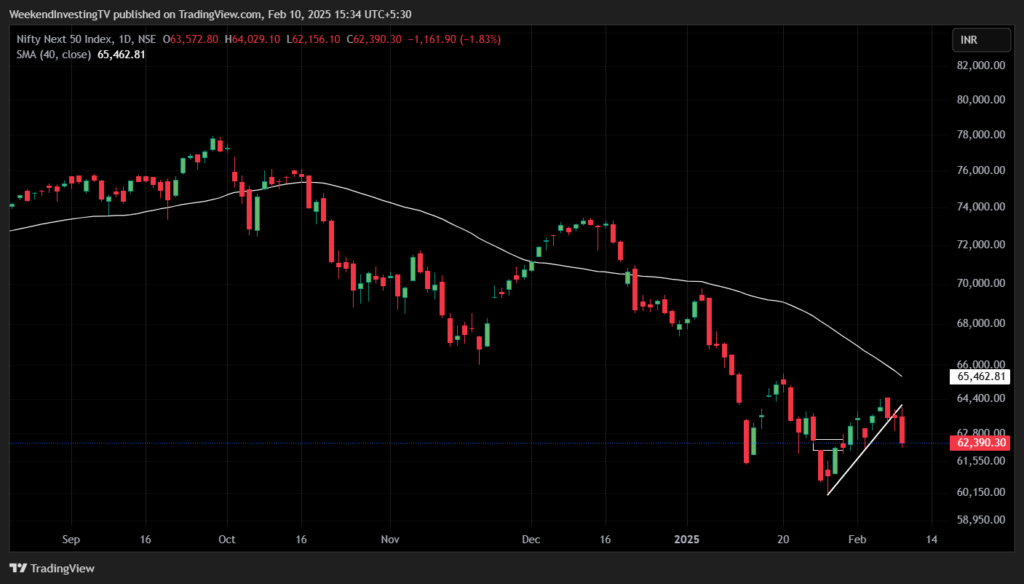
Nifty Mid and Small Cap
Mid-caps were down by 2%, and small caps fell by 2.13%. A significant portion of the recent rally has already been lost,
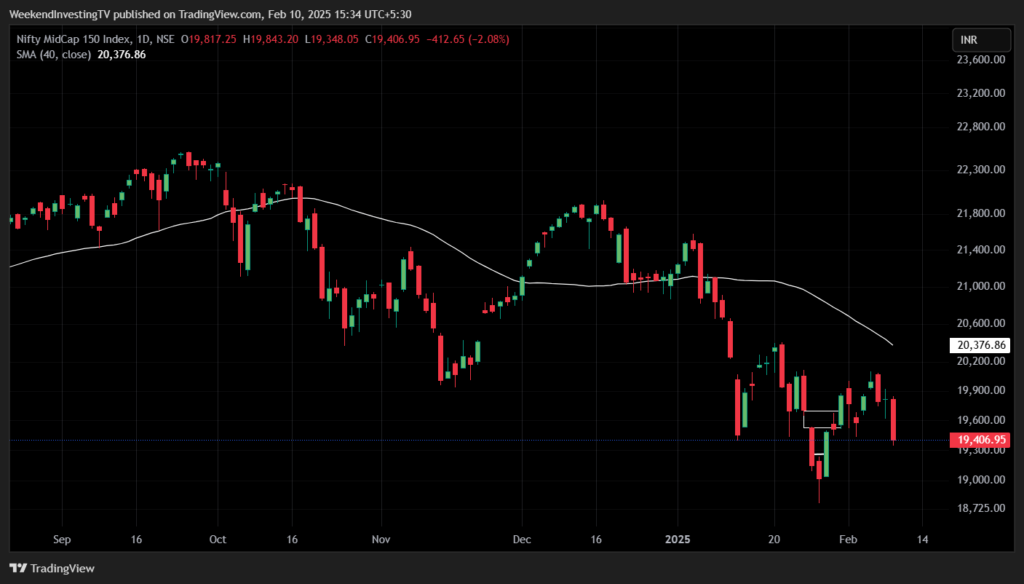
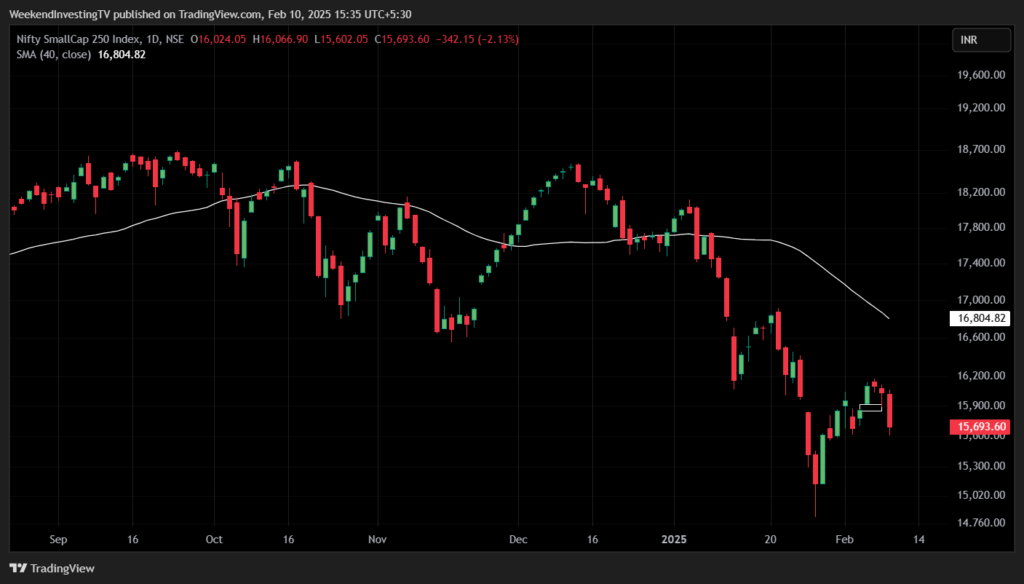
Nifty Bank Overview
The bank Nifty, although not down much at -0.35%, did manage to hold on to most of its recent gains.
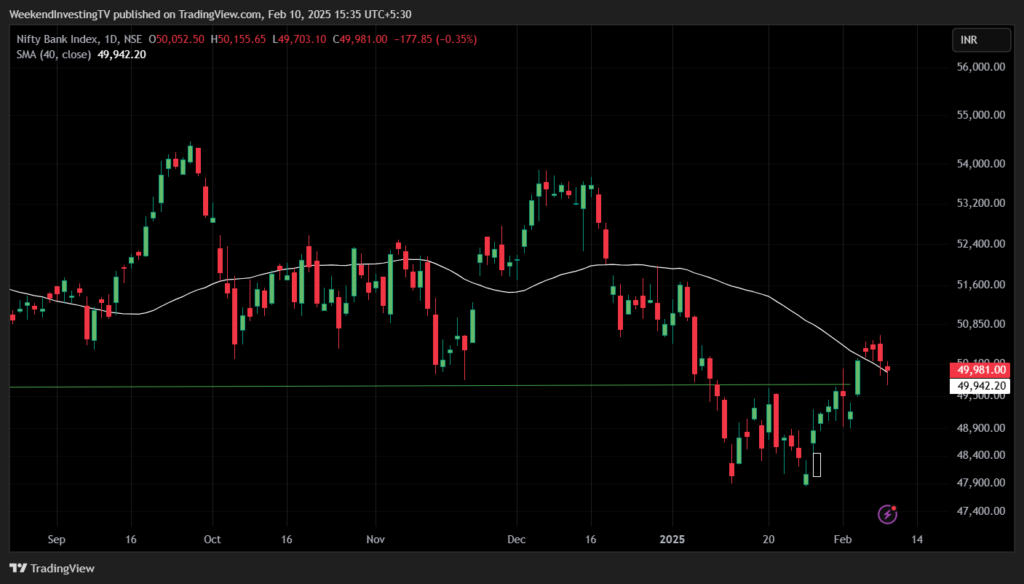
GOLD
Gold has been on a sharp upward trend, up by 1.36% today, rising from 74,000 to 86,000 in just six weeks. This is the contra hedge I’ve been talking about for the past nine years, and it has proven valuable to equity portfolios.
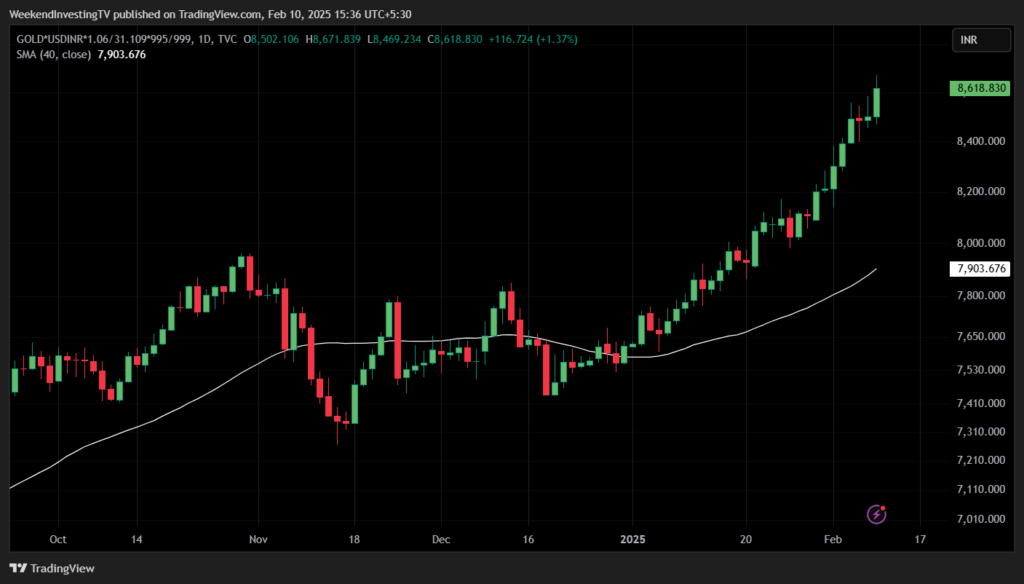
Advanced Declined Ratio Trends
Looking at the momentum trends, the advanced-decline ratio was awful today, with only 58 advances compared to 442 declines.

Nifty Heatmap
The heat map was almost entirely red, with very few green stocks. Kotak Bank managed to post a small gain of 1.6%, while Bharti Airtel was up by 1%. However, large stocks like Reliance, Infosys, Bajaj Finance, HDFC Bank, ONGC, Titan, Tata Motors, Power Grid, and Trent were all down significantly, with Trent falling by another 5%. The Nifty Next 50 index also saw mostly red, with stocks like ICICI GI and Vedanta crashing hard. Zomato and Divi’s Lab also had significant down days, while Adani, DLF, and Clodha saw big declines.
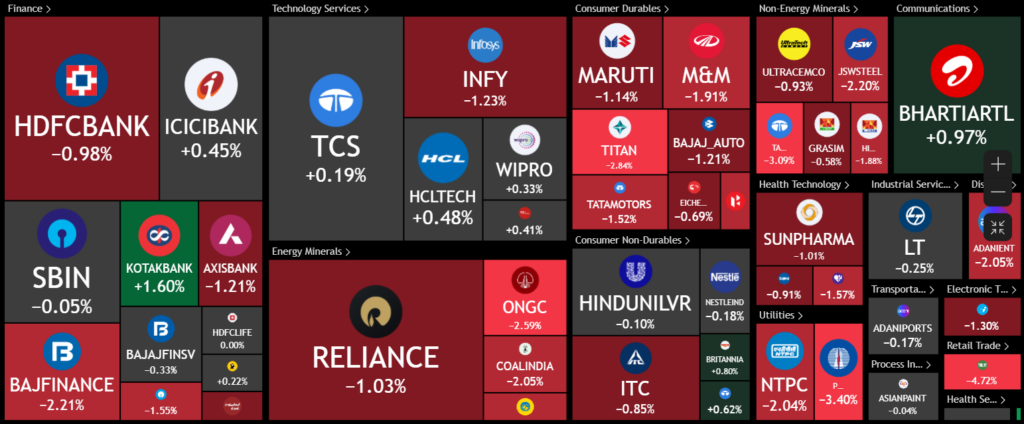
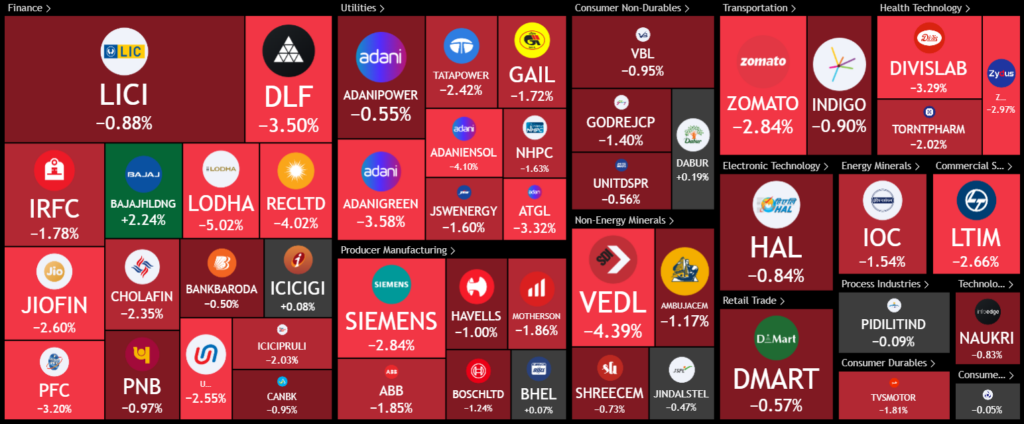
Sectoral Overview
Sector trends were mostly negative, with banking being the least hit, down only about half a percent, and FMCG stocks also taking a relatively minor hit. However, real estate, metals, capital markets, public sector, energy, and pharma all saw losses of 2% or more. A lot of the good gains from the past few days were already wiped out.
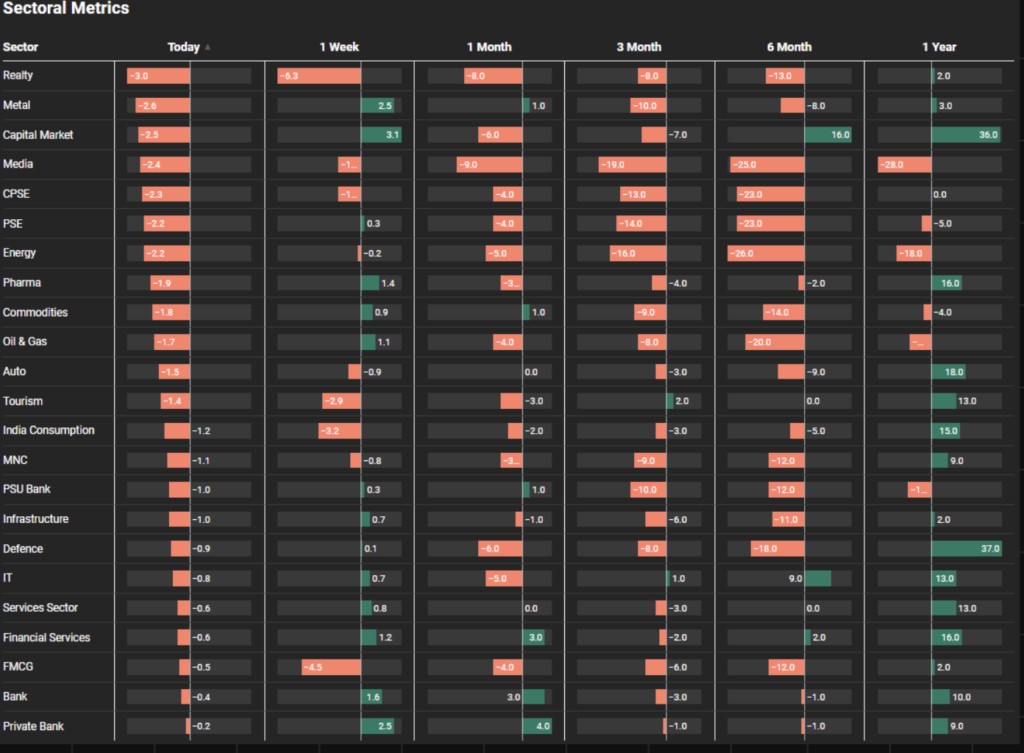
Sectors of the Day
Nifty REALTY Index
The real estate sector was down by 3%, with Sobha leading the charge at -6%. Many had expected some pickup in real estate after the quarter percent rate cut, but it seems like it’s already baked in. This goes to show that it’s not rate cuts themselves that push markets up, but rather the anticipation of rate cuts that boosts sentiment.
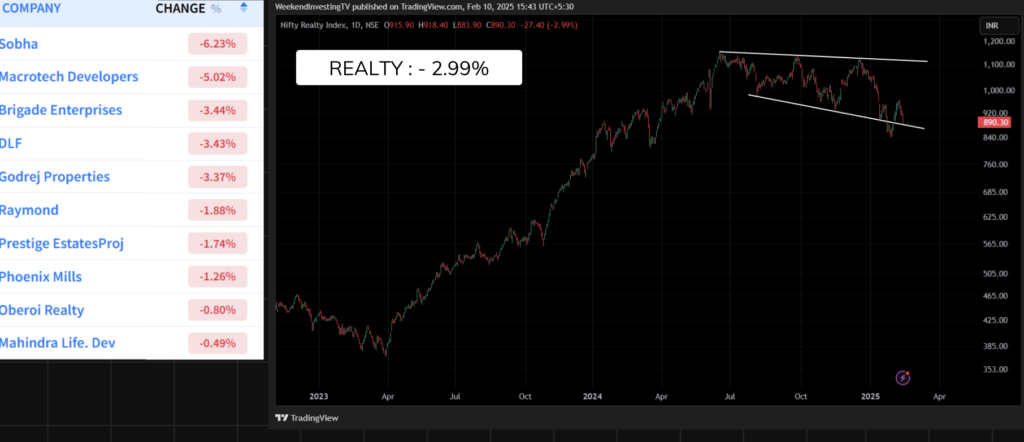
Story of the Day : Is it Risky to Invest in Mid Caps Right Now ?
let’s discuss the story of the day. Mr. S. Naren, a seasoned fund manager, recently cautioned investors about the risks of investing in mid-cap stocks at this point in the cycle. He emphasized that if clients invest their money at the top of the mid-cap cycle, the risk is theirs to bear. The fund will invest in mid-cap stocks as per the mandate, but the performance from here on is beyond the fund manager’s control. From a value investing perspective, Mr. Naren is probably finding it difficult to see value in most stocks, which is fair. However, as a fund manager, I don’t believe it’s appropriate to say that investors are solely responsible for the outcome of their investments.
In my view, discretionary funds should take more responsibility in managing risks and delivering value. When you invest, it’s not just about allocating money to a specific sector but also about identifying opportunities and ensuring your fund performs. The issue here is that the entire mutual fund industry seems to be caught in a vicious cycle. The sales team is pushing to increase the assets under management (AUM), while fund managers are left with limited opportunities to invest. This creates a situation where the risk is being passed around. The sales team pushes for more investments, and the fund manager is left to handle the consequences, even when they see limited value in the market.
The problem here is that sales teams often prioritize commissions over the performance of the funds. They need to push for new investments to keep their revenue streams flowing, while the fund managers are caught in a situation where they have to invest in whatever mandates they are given. It’s a case of passing the buck, with each party trying to protect their own interests. This has led to some internal discord within asset management companies, with changes being made to fund manager commentary after it was posted, and videos being taken down. These actions raise trust issues, as they suggest a lack of transparency in the decision-making process.
Despite all this, I respect Mr. Naren and the entire mutual fund industry. However, I don’t agree with some of his statements, particularly the one where he suggested that investors should take responsibility for the risks of mid-cap investments. We have seen these cycles play out over the years. Investors tend to come in when the market is at its peak and exit when it’s at the bottom. This has been a consistent pattern for decades. The key is to be patient and understand that market returns are lumpy. You can’t expect a steady, linear growth path. There will be years where markets are up and years when they are down. That’s just how it works.
One key lesson from history is that markets are cyclical. You can’t predict when a market will hit its bottom or top. Staying invested through different market phases is crucial. Missing out on the best-performing days can significantly impact your returns, as many studies have shown. If you’re out of the market for just a few of those days, you could fall behind. The easier way to navigate these cycles is to follow momentum strategies, as I have done. A dynamic approach where you exit weak stocks and enter stronger ones allows you to adapt to market conditions. Even if the market is falling, you can be confident that you’ll ride the next rally by focusing on the right stocks.
The important thing is to have a clear strategy—know what to buy, when to buy, how much to buy, and when to sell. Once your principles are crystal clear, you’ll be able to navigate through any kind of market.
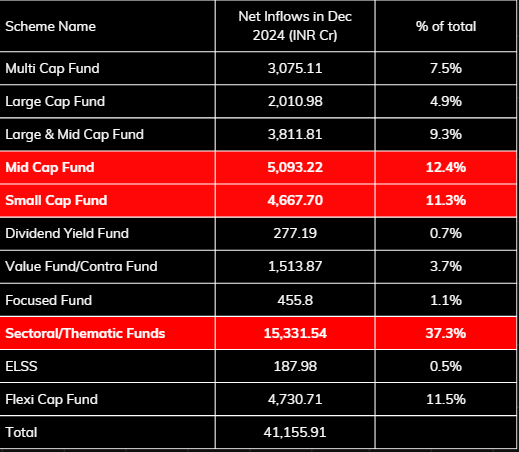
WeekendInvesting launches – PortfolioMomentum Report
Disclaimers and disclosures : https://tinyurl.com/2763eyaz






